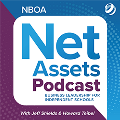
Little makes business officers’ eyes light up like data. As you know, when meticulously tracked, data can crystallize subtle trends impacting a school’s course of action. When artfully presented, data can mobilize key constituents to impact those trends for the better.
But when you share data in painstaking detail — even in the interest of “transparency” — the effect may be to distract, derail, paralyze. At a board meeting I once attended, a good 15 minutes were spent on a line-by-line analysis of the point at which one small program would be able to add one half-time employee. I found it exhausting, and frankly flabbergasting. Did that level of detail help the board think strategically about the future of the organization? No. Did it cause some members to wonder why certain other programs weren’t getting a new .5 FTE? Perhaps. Did it take 15 minutes that could have strengthened the board’s ability to govern effectively? Absolutely.
Good data tells a story, and it’s never been more important for you to tell that story well. As writer Donna Davis notes in the article that begins on page 18 of this issue, too much detail can lead a board to stray into non-strategic decisions. She cites a trustee who became upset about a percentage budget overage that in fact represented $400 to replace outdated reference books. By comparison, Chad Stacy’s article on page 25 outlines how the Dunn School identified 12 broad metrics by which its board would assess — and went on to dramatically improve — the school’s financial sustainability.
I’m fortunate that the NBOA board, the majority of whom are business officers themselves, appreciates data at a high level. It’s not that they don’t value line items and intricate charts. In fact, every member of the NBOA board not only has the capacity to understand very complex financial data, but their livelihoods depend on them doing so to make critical decisions for their schools. The difference, of course, lies in their broad fiduciary duty to NBOA, versus their hands-on responsibility for their schools.
It’s an old truism of the capitalist economy that buildings and land comprise the most valuable asset an entity or individual can typically own. While independent schools’ physical campuses remain, in most cases, their largest quantifiable assets, their data — financial, operational, academic and so on — represents hugely undertapped resources. As you head in the 2016 – 2017 school year, I encourage you to look at your data in new ways so that it, too, can tell its story clearly, persuasively and impactfully.


